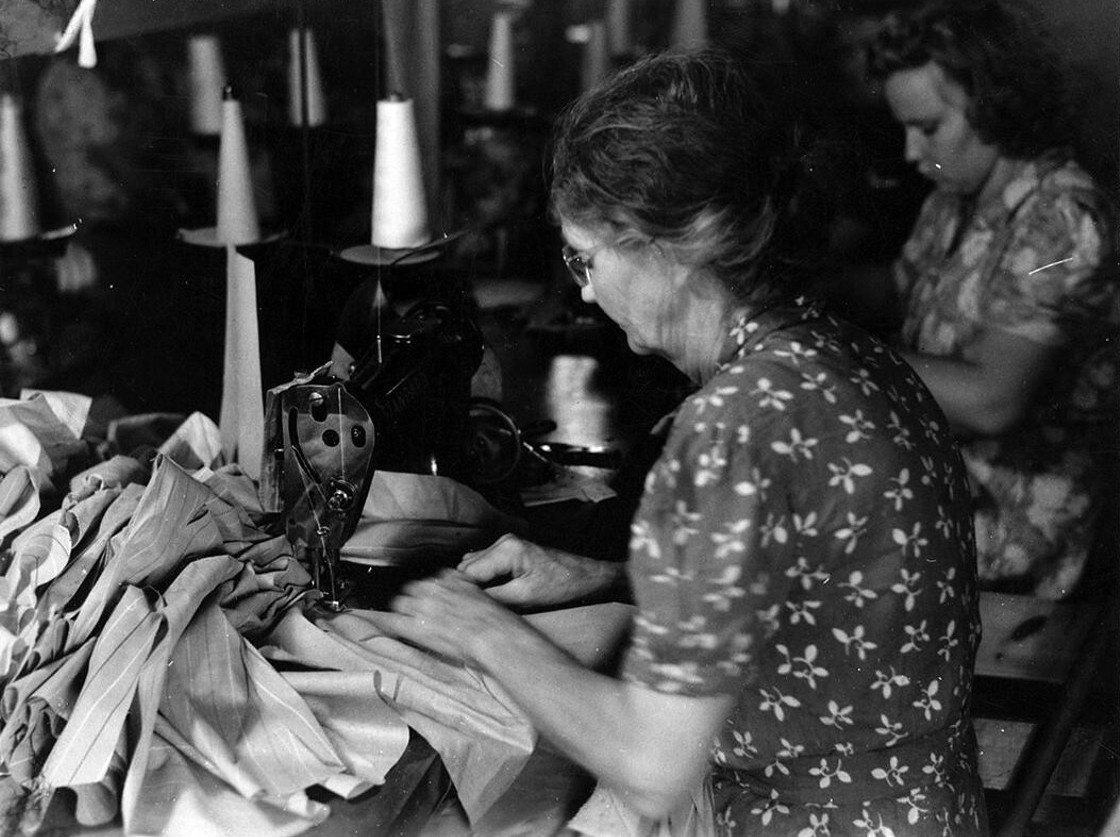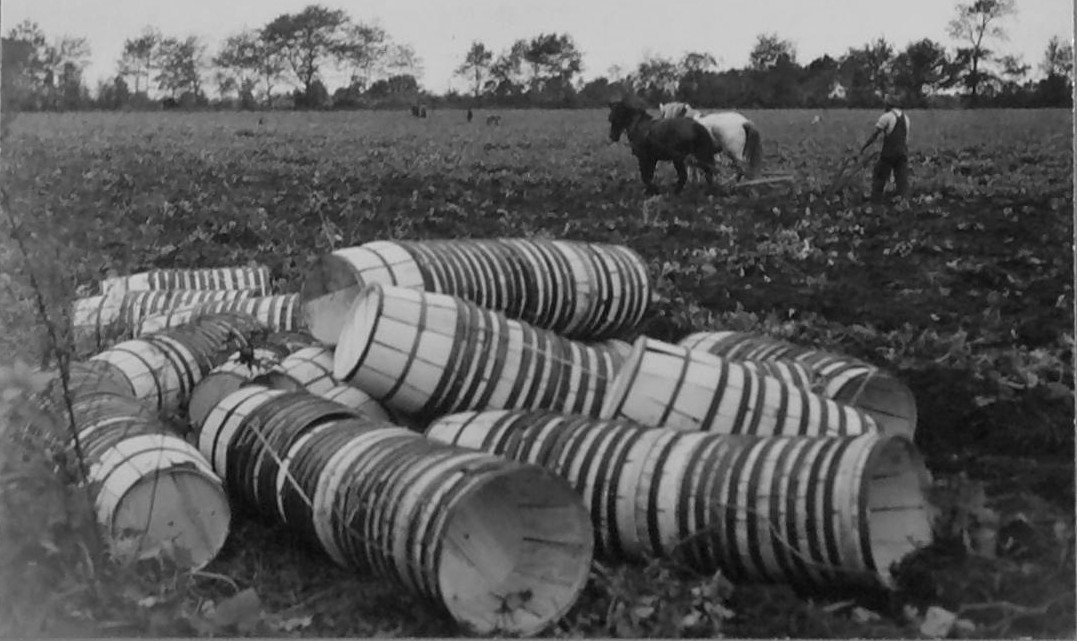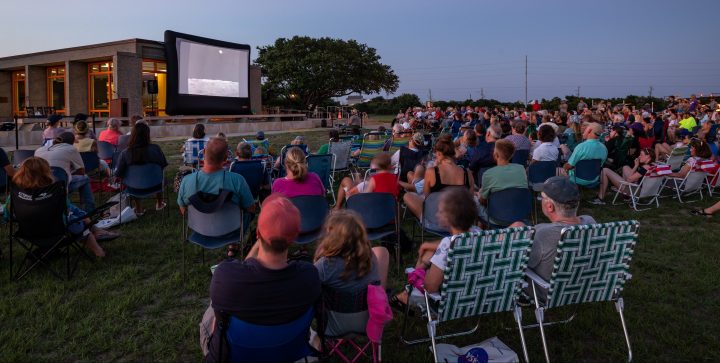
KILL DEVIL HILLS – Fifty years ago, about 1,000 people were onsite at the Wright Brothers National Memorial to behold the most remarkable juxtaposition. On TV screens in front of them were the first two men on the moon, and on the grounds behind them, there was the boulder marking the distance of the first flight by two men in 1903.
The two earth-shattering American achievements were separated by a mere 66 years.
Supporter Spotlight
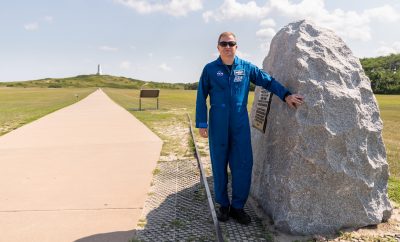
“As a pilot, this is a big deal to see where it all started,” said Eric A. Boe, an active NASA astronaut who was visiting the park for the first time this past weekend. “I see space flight as a continuation of aviation.”
And the fundamentals of aviation that the Wrights brought to the world were used in the Apollo missions.
About 400 showed up at the memorial Saturday to relive a shared moment of celebration in humanity that the Apollo 11 mission inspired, at the place where the mystery of human flight was conquered.
As the day’s steaming heat softened under sultry summer breezes, the sun sunk behind the horizon, backlighting the Wright Brothers Visitor Center in shades of red. Instead of the array of black-and-white televisions that lined the exterior wall in 1969, there was a single large screen.
Dana Dickens waited in the audience for the rebroadcast of the live moon landing, just as he did in 1969, when he came with his coworkers who had helped organize the showing.
Supporter Spotlight
“We were thinking about how significant it was for us to have the opportunity to be where flight began to see man take the first step on the moon,” recalled Dickens, who lives in Suffolk, Virginia.
Dickens, now 73, was that summer a college student who was waiting tables at Port O’ Call Restaurant in Kill Devil Hills. One day, he and about five other waiters, also students, were sitting around talking when the upcoming moon landing came up.
“Somebody said, ‘Wouldn’t it be cool to watch the first step on the moon from where flight began?’,” he recounted.
They jumped at the idea and set out to get approval from the National Park Service. A store in Manteo agreed to loan the television sets, and the park agreed to advertise the event.
“And it happened,” Dickens said. “I do remember everybody was quiet and laser-focused on what was happening … just the magnitude of the accomplishment.
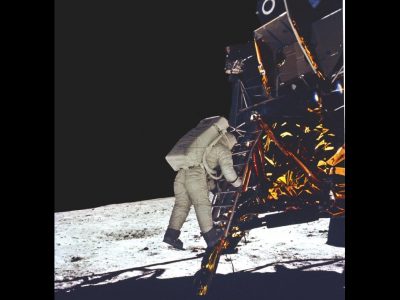
“It makes you proud to see that, and proud to be an American.”
Dickens said one of his friends called CBS News and spoke to newsman Roger Mudd, who commented at the end of his broadcast that it was satisfying to see young college students recognize the significance of the moon landing.
During the replaying of the broadcast Saturday, the audience leaned forward in their seats, seemingly awestruck as they watched CBS’s coverage of the countdown to lunar landing, keeping track of velocity, range and altitude as the spacecraft approached the surface.
“Ten minutes to the touchdown,” a clearly awed Walter Cronkite said. “Oh, boy – 10 minutes ‘til landing on the moon.”
“Four and a half minutes left in this era.”
“5,200 feet – less than a mile from the moon’s surface.”
Tension amped up as Armstrong hovered over the moon with just 60 seconds of fuel remaining, looking for a better landing spot. The astronaut took over the controls from the computer guidance system and quickly found a smoother area.
“Forward, forward,” a voice crackled. It was Apollo Lunar Module pilot Buzz Aldrin. “Down two and a half … picking up some dust.”
“We’re home!” exclaimed Mercury Seven astronaut Wally Schirra who was on the air with Cronkite.
“Man on the moon! Aw gee,” said Cronkite.
“Houston, Tranquility Base here. The Eagle has landed,” Commander Neil Armstrong radioed from the surface of the moon.
The audience erupted in applause, showing how little the drama had diminished after a half-century. With the broadcast recording fast-forwarded to six hours and 39 minutes later, those gathered applauded again as they watched Neil Armstrong take his first step on the moon.
The project had cost $25 billion and employed 400,000 people. About 600 million people reportedly watched the live event on television, with news footage later showing people from all over the world gathered around TV sets, mouths agape in wonder.
“I don’t think the world has ever been more together than it is now,” a young woman interviewed in Central Park after watching the event told a television reporter.
More than three decades later in 2003, Armstrong was one of the biggest aviation celebrities to participate in the Centennial of Flight event at the Wright Memorial. Coincidentally, Dickens, who was then mayor of Suffolk, was one of the invitees of the event and found himself in a room with Armstrong. After introducing himself, Dickens said he told Armstrong about watching him on the moon while he was at the site where flight began.
“He thought that was the neatest thing that he had ever heard,” Dickens said.
During numerous events leading up to the centennial, the stunning achievement of space flight mere decades after the Wright brothers’ flight was often mentioned. But most Apollo coverage only mentioned that Armstrong had carried a portion of the Wright Flyer strut and fabric from the wing into space with him.
Orville and Wilbur Wright shared a similar vision, passion, dedication and steeliness as the participants in the U.S. space program leading up to the Apollo 11 mission.
“I believe that simple flight at least is possible to man and that the experiments and investigations of a large number of independent workers will result in the accumulation of information and knowledge and skill which will finally lead to accomplish flight,” Wilbur Wright wrote on May 30, 1899, in a letter to the Smithsonian Institution.
It took fewer than four years for the Wrights to achieve their goal, and less than 10 years for NASA to fulfill President Kennedy’s promise made during a famous speech. But both achievements showed that the nature of inventing is building on what others have done before.
Besides the goals of going back to the moon and reaching Mars, Boe said Saturday that the next big, dramatic human achievement of that scale would be hard to predict, but he said there is a lot going on that the public may not see that’s advancing science.
“You’ve got to bring everything up to the new technology,” he said. “It takes a while to catch up.”
And just like the invention of the airplane and the moon shot, everyone should share the benefit.
“It’s not us against them,” Boe said. “We’ve got to work together as a planet.”
Front page featured photo: Attendees prepare to watch the rebroadcast of the CBS news coverage of the Apollo 11 moon landing. Photo: Melissa Mattingly





